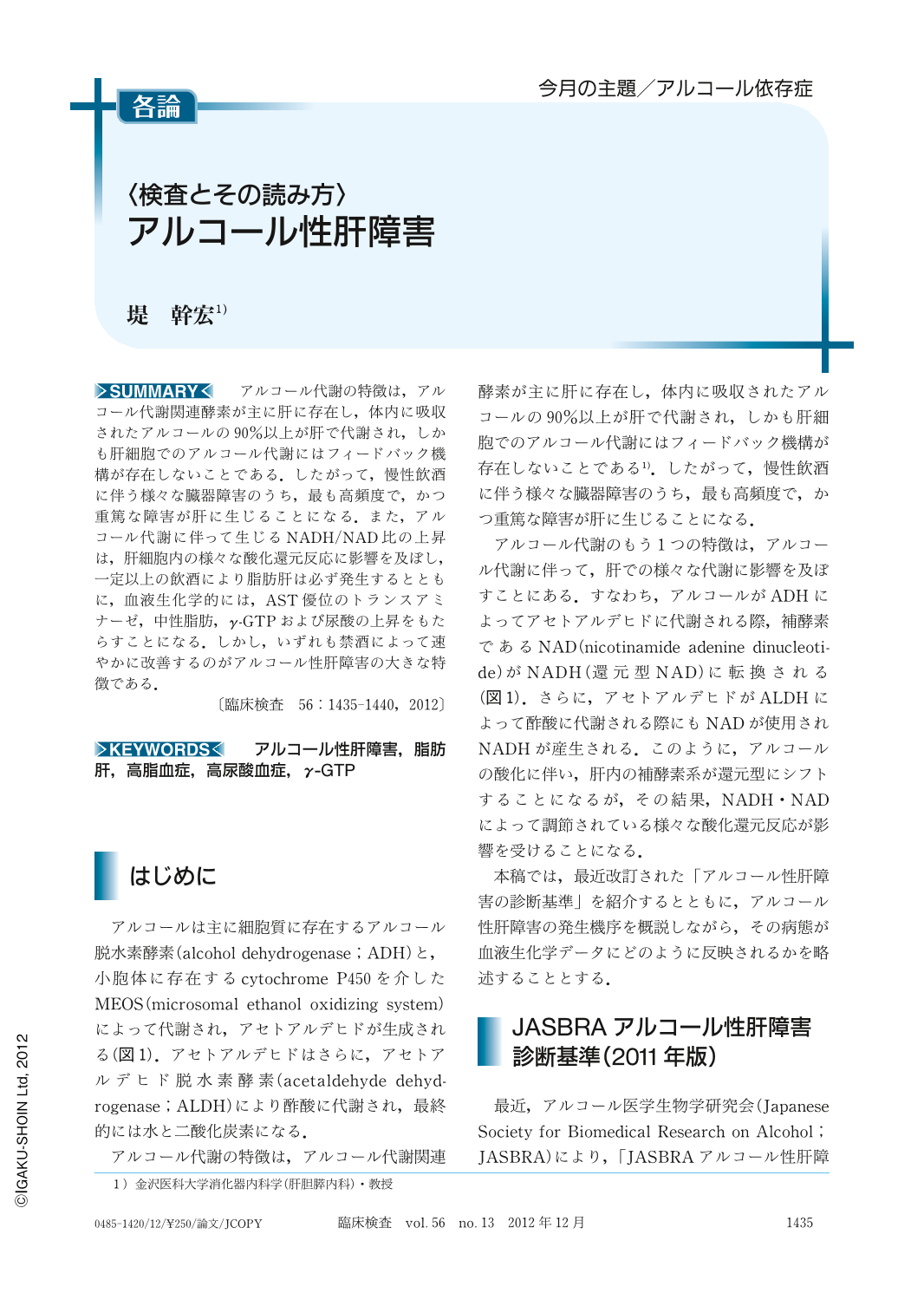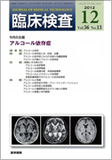Japanese
English
- 有料閲覧
- Abstract 文献概要
- 1ページ目 Look Inside
- 参考文献 Reference
アルコール代謝の特徴は,アルコール代謝関連酵素が主に肝に存在し,体内に吸収されたアルコールの90%以上が肝で代謝され,しかも肝細胞でのアルコール代謝にはフィードバック機構が存在しないことである.したがって,慢性飲酒に伴う様々な臓器障害のうち,最も高頻度で,かつ重篤な障害が肝に生じることになる.また,アルコール代謝に伴って生じるNADH/NAD比の上昇は,肝細胞内の様々な酸化還元反応に影響を及ぼし,一定以上の飲酒により脂肪肝は必ず発生するとともに,血液生化学的には,AST優位のトランスアミナーゼ,中性脂肪,γ-GTPおよび尿酸の上昇をもたらすことになる.しかし,いずれも禁酒によって速やかに改善するのがアルコール性肝障害の大きな特徴である.
Since hepatocytes are the primary site of alcohol detoxification, its major metabolic intermediate, acetaldehyde causes direct hepatocyte damage and also an increase of the NADH/NAD ratio. The increase of the NADH/NAD ratio affects several metabolic activities in the hepatocytes, such as β-oxidation of fatty acids, synthesis of triglycerides and glucose etc. Therefore, fatty liver occurs in human who drinks more than 100 g ethanol/day for one or two weeks. It is characteristic in alcoholic patients that high serum levels of triglycerides, γ-GTP, uric acid, AST and ALT (AST>ALT) decrease after abstinence and return to normal in due course.

Copyright © 2012, Igaku-Shoin Ltd. All rights reserved.


